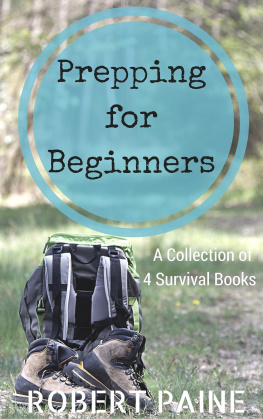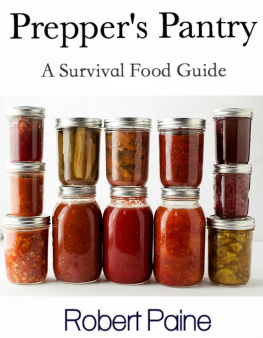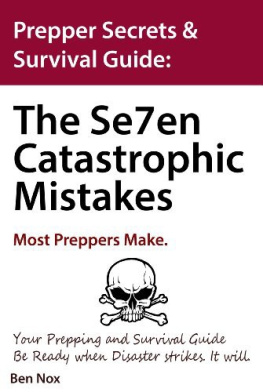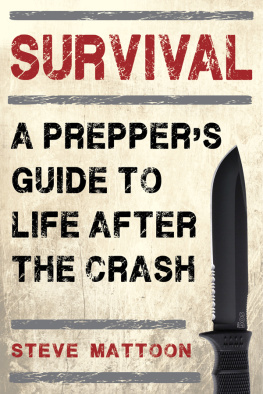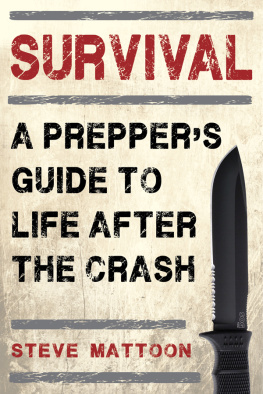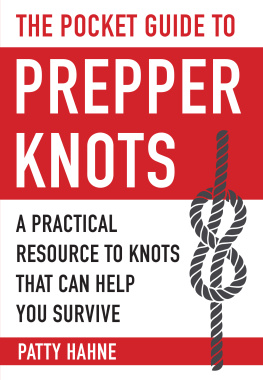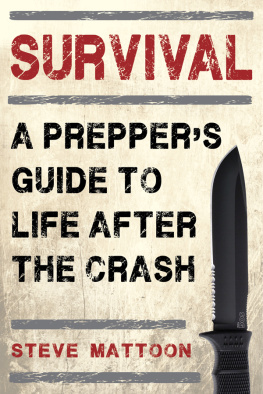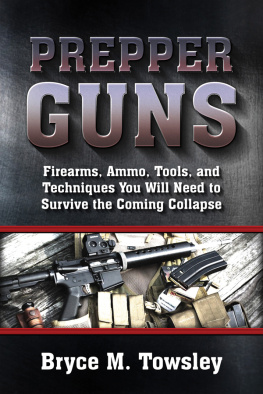
Preparing House
and Mind
W hy bother being prepared for a disaster? Typically, we Americans navigate our daily routines as smoothly as we drive our cars. But much of our confidence comes from the nature of routine itself, from living day to day and year to year in fairly predictable circumstancesintact homes, functioning hospitals, running water, stocked supermarkets that open on schedule, and everyone where they should be when they should be there. Its natural to take for granted that we have things under control.
But when disaster strikesas anyone whos lived through it knowsthe fantasy of control collapses, along with the infrastructure that makes our lives normal. When the unthinkable occurs, our perceptions change along with our surroundings; we become viscerally aware that we cant control outside eventsand that to stay alive we must act quickly in unfamiliar circumstances.
Thankfully, we can survive disasters. History demonstrates that in the face of catastrophic threats, we humans instinctively act to preserve lifeboth our own and the lives of others. To do so effectively, however, we need the right tools. This book is your guide to those tools, not the least of which are mental tools.
Mental Supplies
Surprisinglyespecially for those looking to simply stock up on survival supplies and gearthe most important component to readiness is a prepared state of mind. This includes an understanding that disaster asks us not only to survive, but to help others survive. Naturally, we think first of our loved ones in a disaster. But disaster strikes on its own schedule, when we are at an airport in an unfamiliar city, or on the transit system going home from work, or even in the aisles of the local grocery store. At the moment of crisis, your life may be in the hands of a complete stranger. Or a strangers survival may depend on you knowing what to do in that moment. Would you know what to do? Are you prepared with the knowledge and skills to save a life or to calm a highly traumatized person?
As you read through this book for the practical (and here and there amusingly excessive examples of) supplies available for disaster preparation, keep in mind that the most valuable thing to have in advance of an emergency is first-aid and Community Emergency Response Team (CERT) trainingand a mind-set that has moved beyond asking How will I get my needs met? to How will I help others? Merely stocking survival water, food, and first aid supplies makes you a person with resources, but earning certification in first aid and CERT makes you a resource to your loved ones, coworkers, and community members.
Examples of practical heroism abound during disasters. Dont be misled by the numerous survivalist websites depicting preparedness as a solo endeavor accomplished in grim isolation. The overwhelming majority of Americans live in highly populated areas where disaster relief is a shared effort and preparedness is fast becoming a civic duty. As more and more Americans volunteer to train for emergency preparedness, our country becomes a team of prepared citizens. When disaster strikes, local teams jump into action first; federal disaster management teams quickly follow, staffed by people trained to coordinate response efforts. In a disaster, those with CERT training are identified and given special assignments, since they are known to emergency responders as being knowledgeable and well prepared.
This sorting of volunteers in a disaster is both organizational and lifesaving. For example, if you have not been trained to read and understand hazardous materials placards on buildings, you could decide impulsively to rush in and offer help inside a structure that is about to explode. Certain highly dangerous rescue operations must be done by emergency professionals and not the rest of us. A CERT-trained person knows what should not be done as well as what should be done during a disaster. And that knowledge enables those around him or her to sidestep panic and fear.
What Would Mrs. Miniver Do?
We all know that the United States has been and will continue to be a target for terrorist organizations. But just because a terrorist attack is possible, it does not mean it is likely in your neighborhood. Whenever we cultivate fear or panic in ourselves or in others, we are essentially bowing to terrorists, whose main goal is to elevate fear, and through that fearfulness exert control. It is a highly psychological weapon, for which we prepare as a peoplenot as isolated individualsby maintaining the state of mind that we can and will survive, all together.
The American capacity for teamwork and positivity during disasters is well established, and has been depicted in countless stories, films, and television showsshowing real events and fictional ones. A classic of the genre is Mrs. Miniver, a 1942 film set in wartime Britain but made by an American cast and crew and directed by the legendary William Wyler. Mrs. Miniver is a mild-mannered British housewife who conducts herself with extraordinary level-headedness and courage even when under attack. Recognized by the American Film Institute as one of the most inspirational films of all time, and by the National Film Registry of the Library of Congress as worthy of being preserved for all time for its cultural, aesthetic, and historical significance, this film is about what ordinary people do to reject fear, pull together, and carry on in the face of relentless peril.
At any time during your preparation effortsperhaps after watching the Red Cross video A Family Guide to First Aid and Emergency Preparedness, or maybe when you find yourself or your family members thinking about scary threatstake a break and watch Mrs. Miniver to remind yourselves that the most important aspect of preparedness is a state of mind in which we courageously cultivate hope, not fear.
How Much Does It Cost?
Throughout this book you will find descriptions of specific products, with dollar signs indicating about how much they cost. Prices change all the time and may vary from seller to seller, so we have given a range rather than an exact price. We have used the following symbols to indicate price ranges:
$ Below $20
$$ $20$50
$$$ $51$200
$$$$ $201$500
$$$$$ $501+

Preparation
Basics

Preparation Basics
P reparing for a disaster requires imagination and logic, in that order. When you think about facing a disaster, what image comes to mind? The brains go-to image is different for each person, and in great part depends on where you live and the most recent news footage or photos you have seen. But even if you limit your expectations to a regional disaster, say an earthquake if youre in California or a tornado if youre in Oklahoma, you have only begun to imagine what that disaster means to you and yours, because what you do in that moment depends on where you are.


